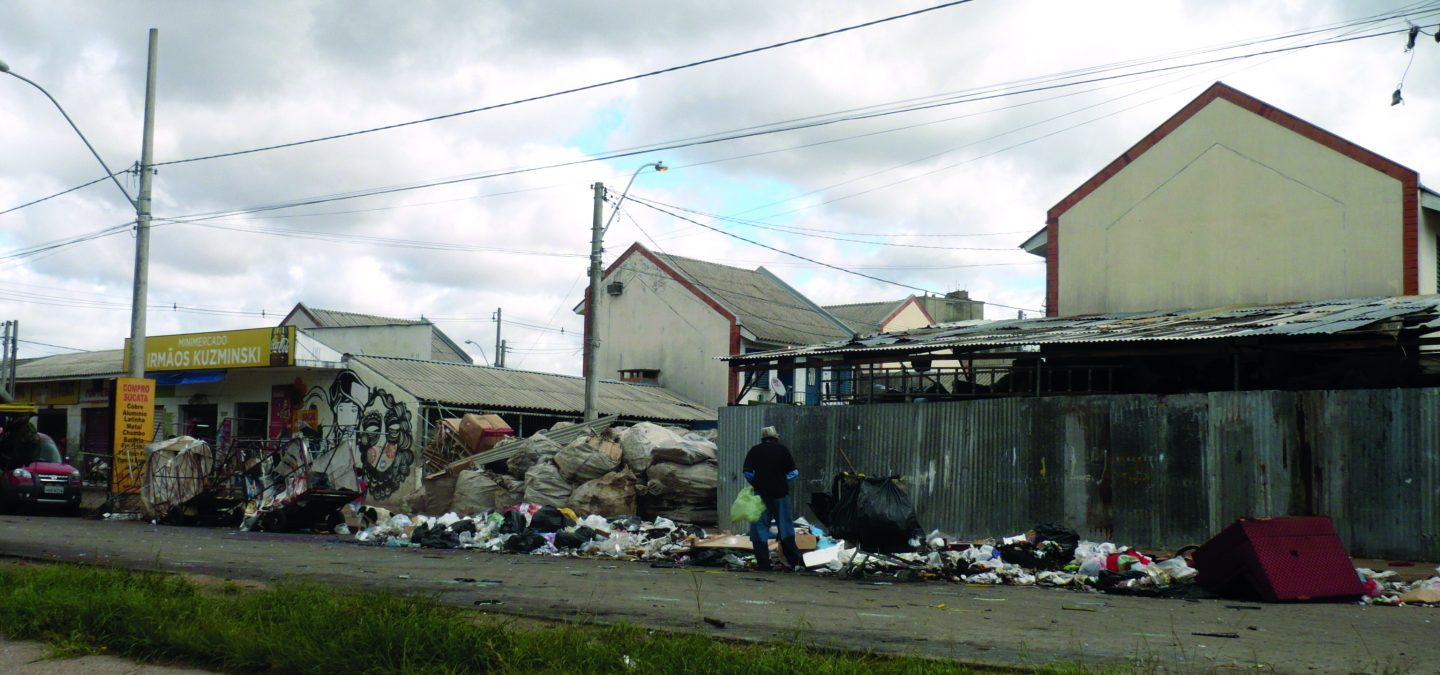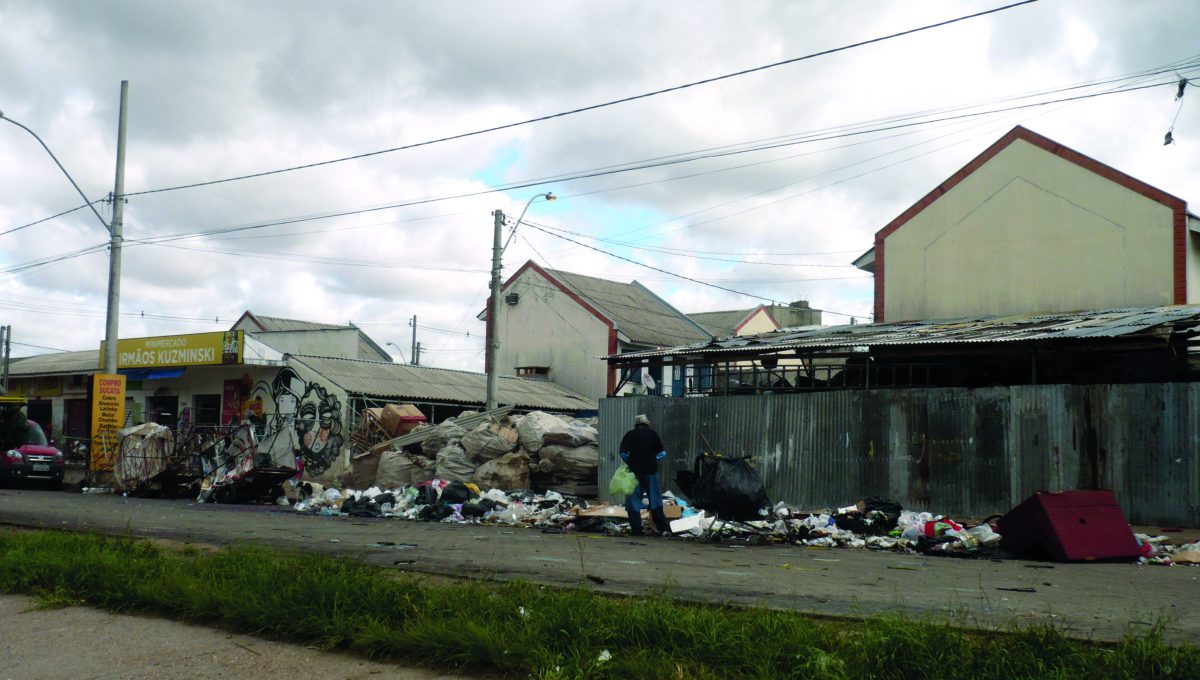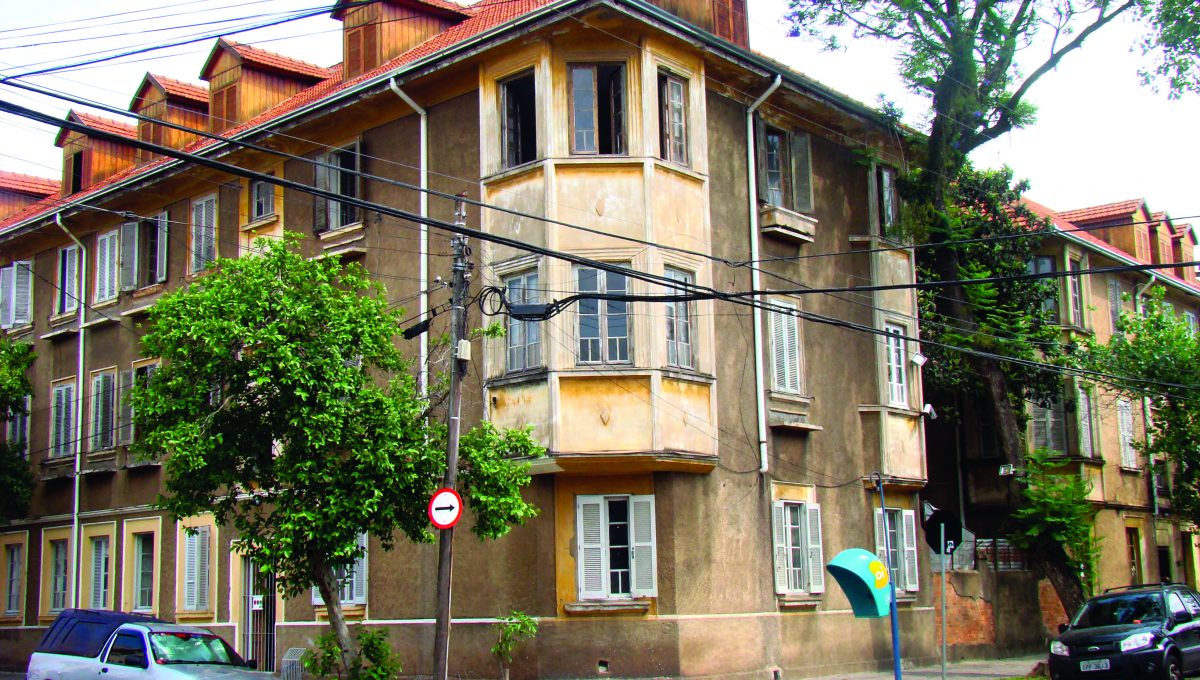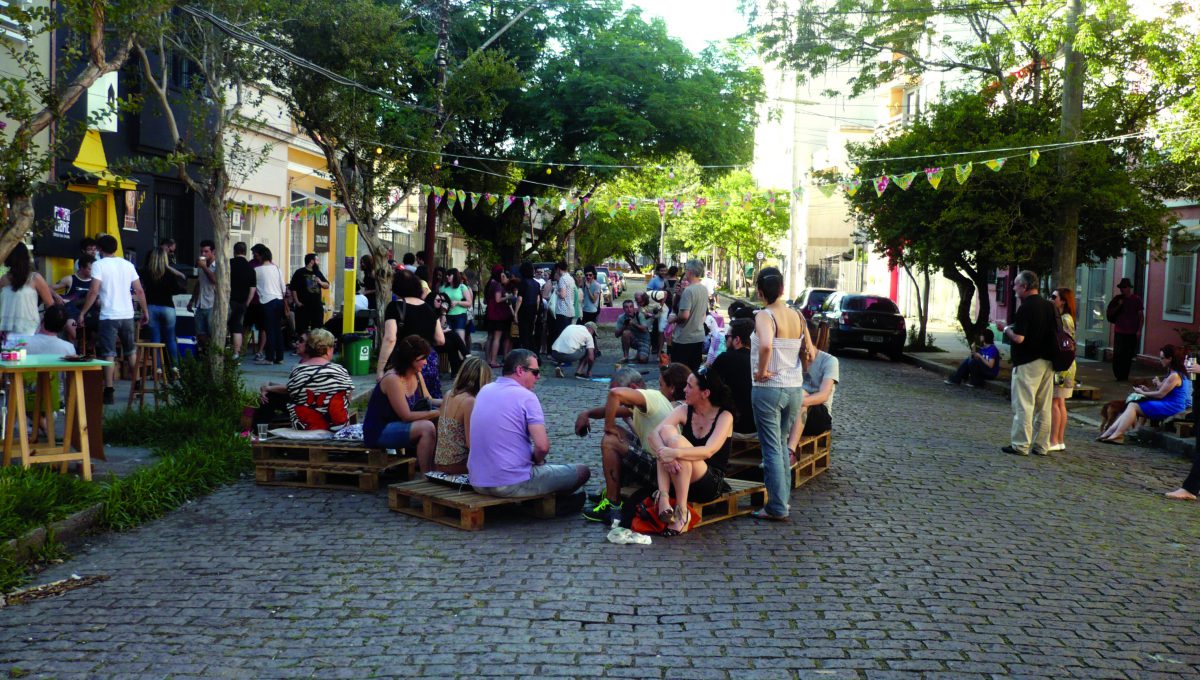
Keep up with our latest news and projects!

This is the case of a vast central area in Porto Alegre: 4° Distrito, or the 4th District. Characterized by impressive art-deco architecture, the area developed as one of the first industrial areas of the city, where living and working used to co-exist. Industrial uses peaked in the mid-1900s, however since then industries moved out to other areas, resulting in the vacancy of many buildings. After this period, residential use stagnated and the area lost much of its original character.
Auto garages, transport companies, a few offices, storage and vacancy now make up the uses of the area. Prostitution and drug trafficking takes place on some streets (even during the day), nothing is taken care of, the buildings are degraded, the streets have lost their potential charm. That is a true shame, even more when considering the vast but decayed cultural heritage and the central location of the area.
 Degraded area of the 4th District
Degraded area of the 4th District
What can be done? What strategies should be adopted? The hidden potential of these vacant buildings should be recognised and utilized. The use of garages and storage facilities, for example, should be redirected and the streets and public spaces need to be reactivated.
Using the empty buildings for innovative technology enterprises, or creating a “digital district”, is a common proposal today in the city. There are already similar proposals from the Municipal Governance
Secretary and a NGO called CITE (Citizenship, Innovation, Technology, Entrepreneurship). However, nothing evolved because of the great complexity of actors, interests and urban visions. Moreover City Hall does not take initiative, nor is it willing to contribute financially. Apparently, it is not a priority for public plans and investments. The result: today we see isolated, self-organized and cultural initiatives from the local civil society to upgrade a part of the area.
Entrepreneurs and engaged residents in one neighbourhood of 4° Distrito, Floresta, have started something new. Emanating from sheer will and the vision to promote high-quality urban life, Vila Flores,
Urbsnova, and other initiatives began. Vila Flores is a centre for culture, education and creative businesses, and a platform for creation, production, and circulation of creative goods and services. The owners, the Wallig family, felt that the building had great potential for cultural production and adopted this spectacularly beautiful building with its inner courtyard. The building is being refurbished at the moment, and will surely result in an impactful work.
The space allows for the collaborative realization of cultural projects, artistic events, courses, filming, and it is the workspace for diverse artists and professionals in creative sectors. Some projects take place for the local community, such as the one of the NGO Women in Construction, which holds workshops to prepare women for construction work.
Another initiative, Urbsnova, is a social innovation agency that aims to create, plan, produce and promote events that, because of their innovative nature, generate a real benefit for the community. The agency established Creative District, a collective of artists and entrepreneurs of the creative economy in 4° District. Urbsnova initiates some very original projects, such as stimulating the real estate market and considering the use of historical empty buildings. The buildings are sold for a lower price if they will be used by the creative economy.
 Villa Flores, Porto Alegre, Brazil
Villa Flores, Porto Alegre, Brazil
 Villa Flores, Porto Alegre, Brazil
Villa Flores, Porto Alegre, Brazil
These independent initiatives have germinated into the community and are connected because of their common wish to improve the neighbourhood. Floresta benefits from a good location, charming urban space and active and creative people. Yet, the results of the initiatives could be more sustainable with more public support. Floresta could have positive influence on the more critical 4o Distrito as a whole.
In collaboration with 4° Distrito , the Faculty of Architecture and Urbanism of PUCRS is involved with these initiatives and at the moment dedicates attention to 4o Distrito in all its projects of urbanism, landscape design and architecture. In all courses, teachers and students think about the region and propose solutions and alternatives. Faculty is integrated in Vila Flores by occupying an exclusive room where the students and teachers can work in the closest way possible to the case area. (pictures). As the university promotes the proposals through public expositions they become more tangible. The proposals and the area receive an increasing amount of public attention, including the media.
Although these cultural initiatives may not be adaptable to other different, more complex parts of 4° Distrito, social, cultural and economic vitality may stimulate substantial changes in the panorama of some points of the region where urban conditions are similar to Floresta. Many parts of 4° Distrito require more thorough planning and incisive public policy to encourage their revitalisation.
The will to self-organize and the demonstrated success achieved by the Floresta community to promote urban vitality exceeded all expectations, even without government assistance. However, if cultural activities have a fundamental role in the regeneration of an urban fabric, also the official support for its maintenance is necessary. It is expected that the joint efforts of the University, residents, entrepreneurs and government can accelerate changes. Enormous potential remains to be explored. We hope the municipality collaborates with the University. We are ready.
Interested? Join The City At Eye Level and share your story!
Discover more